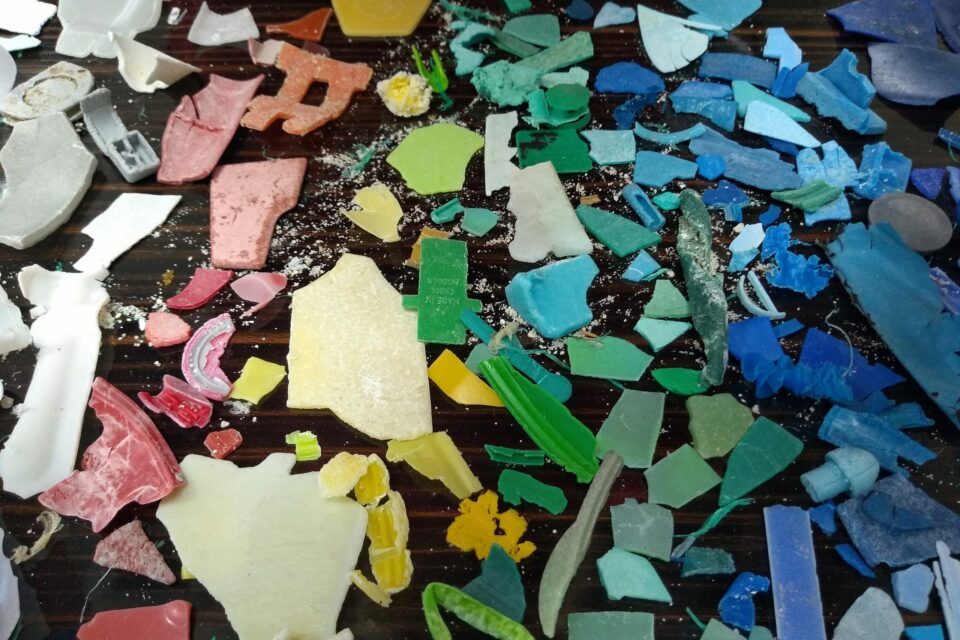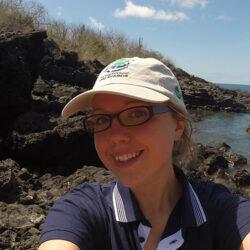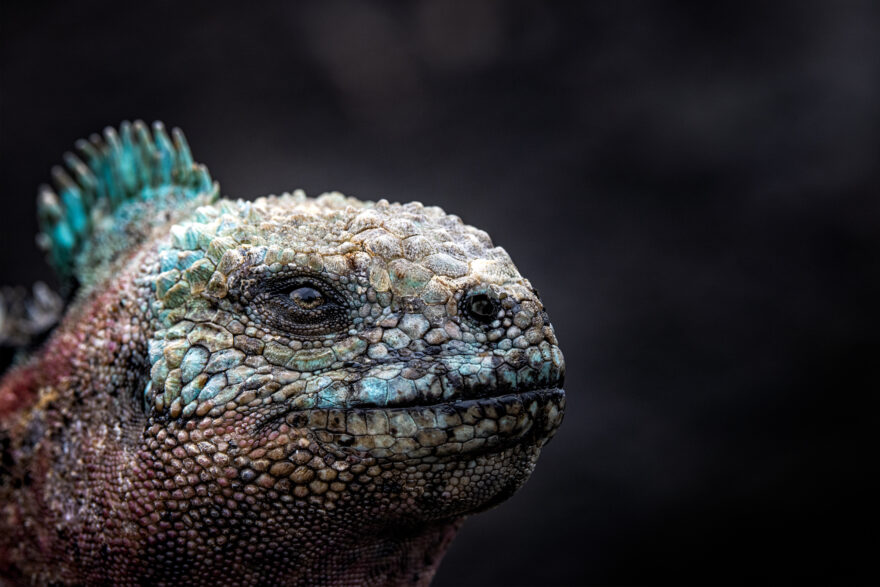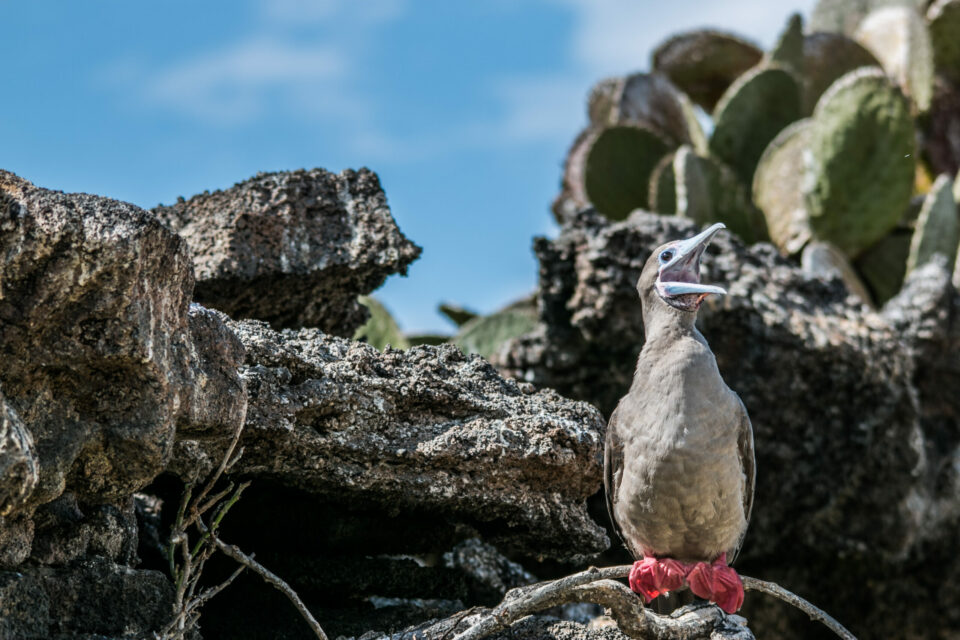

Plastic found in Galapagos seawater, beaches and animals
A new study – by the University of Exeter, Galapagos Conservation Trust (GCT) and the Galapagos Science Center – found plastic in all marine habitats on the island of San Cristobal including in the sea water, in sediments, on beaches and inside marine animals.
Plastic pollution is one of the most pressing issues facing marine wildlife around the world and sadly the Galapagos Islands, despite being one of the most pristine ecosystems in the world, are not exempt from the issue.
A new study – by the University of Exeter, Galapagos Conservation Trust (GCT) and the Galapagos Science Center – found plastic in all marine habitats on the island of San Cristobal including in the seawater, in sediments, on beaches and inside marine animals.

Sampling a beach on San Cristobal island for microplastics © Adam Porter
What was affected?
At the worst ‘hotspots’ on San Cristobal an average of 449 microplastics were found per square metre of beach with a maximum measurement of over 800 per square metre. Microplastics were found inside more than half of the marine invertebrates (such as barnacles, sea cucumbers and urchins) studied around the island. This provides the first published evidence that microplastics are already entering the Galapagos marine food web. The study also identified Galapagos marine vertebrates most at risk from swallowing plastic or getting entangled – including marine iguanas, whale sharks, sea lions and sea turtles.
“Marine invertebrates are a crucial part of food webs which support the larger species that famously live on and around Galapagos. The potential health effects of plastic ingestion on marine animals are largely unknown, and more research is needed to understand how plastics interact with other pollutants, with climate change and, ultimately, how they may affect survival.”
– Dr Jen Jones, lead author and GCT’s Head of Programmes
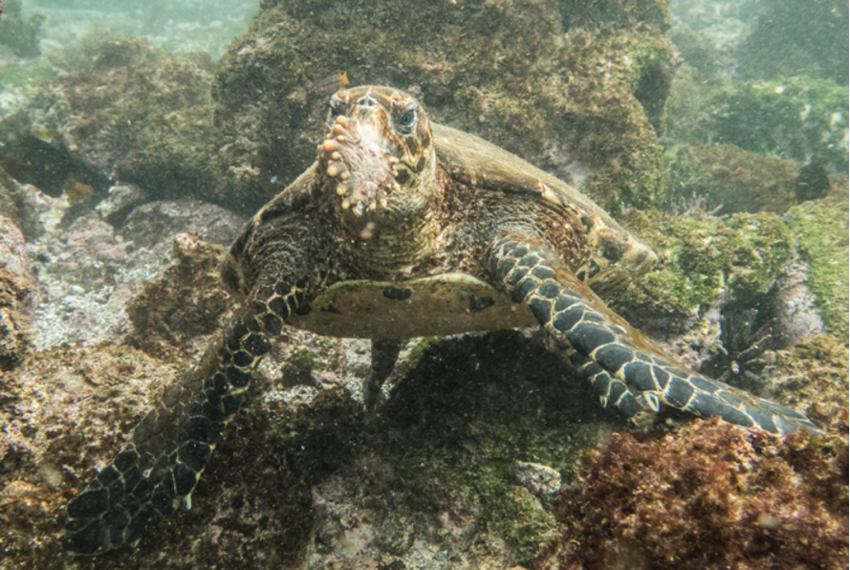
Marine invertebrates, such as brown sea cucumbers, are an important part of food webs, supporting larger animals like this hawksbill turtle © Adam Porter
The findings suggest most plastic pollution in Galapagos – a world-famous biodiversity haven – arrives on ocean currents. It is not currently known what proportion arrives from the continent and how much is produced by fisheries in the region.
“The highest levels of plastic we found were on east-facing beaches, which are exposed to pollution carried across the eastern Pacific on the Humboldt Current. These east-facing beaches include Punta Pitt, a highly polluted site that is home to Godzilla marine iguanas which – like so much Galapagos wildlife – are found nowhere else in the world.”
– Dr Ceri Lewis, of Exeter’s Global Systems Institute
The Godzilla, or San Cristobal, marine iguana subspecies has a population of less than 500 and is only found in the northern and western parts of San Cristobal island. Its overall population trend is unknown, but marine iguanas are considered to be at a similar risk from plastic pollution to turtles as they feed on marine algae and face similar entanglement risks in the coastal environment. The Godzilla marine iguana is also under threat from extreme weather events caused by El Niño, and invasive species including rats and feral cats so the added potential stress from plastic pollution is of high concern.
The findings in detail
The study’s findings include:
- Just 2% of ‘macroplastic’ (items and fragments larger than 5mm) was identified as coming from the Islands. The true figure could be higher, but the findings strongly suggest most plastic arrives on ocean currents. These macroplastics were found at 13 of 14 sandy beaches studied, with 4,610 items collected in total across 1,400 m of beach.
- Microplastics were found in low concentrations in all seabed and seawater samples, with higher concentrations at the harbour suggesting some local input from boats and wastewater outfalls close to the town.
- All seven marine invertebrate species examined were found to contain microplastics (giant barnacles, goose barnacles, oysters, chitons, sea urchins, snails and sea cucumbers).
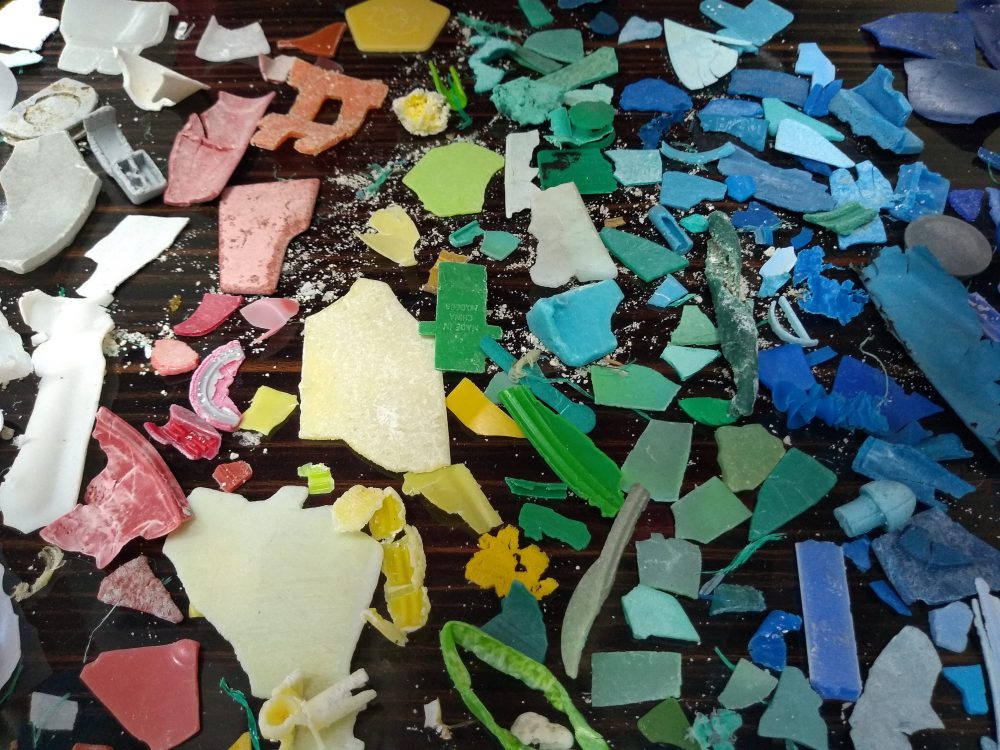
Some of the macroplastic fragments collected during the study © Jen Jones
Vertebrate risk assessment
To analyse the possible impact of plastic on Galapagos marine vertebrates such as sea lions and turtles, the researchers reviewed 138 studies of plastic ingestion and entanglement among similar species worldwide. They also considered how common species are and their conservation status on the IUCN Red List of Threatened Species. Based on this, the study identified 27 vertebrate species in need of urgent monitoring and mitigation.
A regional approach is needed
This study highlights that marine plastic pollution does not respect the boundaries of marine reserves and shows how microplastics can contaminate every part of marine ecosystems. Given the level of pollution found in one remote location on San Cristobal, it’s clear that plastic pollution needs to stop at source. You can’t fix the problem just by cleaning beaches – we need to take a regional if not global approach to reducing plastic waste generation in the first place.
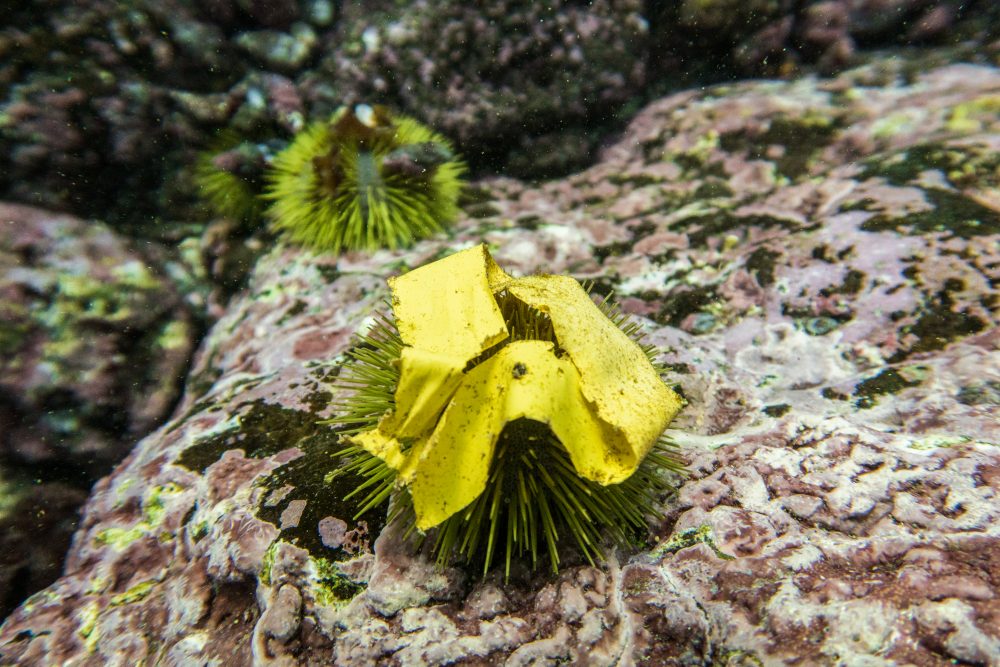
A piece of plastic tape found lying on an urchin © Adam Porter
The new study, funded by GCT and the Royal Geographical Society and published in the journal Science of the Total Environment, is entitled: “Plastic contamination of a Galapagos Island (Ecuador) and the relative risks to native marine species” and can be found here: dx.doi.org/10.1016/j.scitotenv.2021.147704
How you can help
Thanks to our donors we have been able to deliver this important science. Now we want to deliver the solutions – help us to do this by making a donation to GCT.
You can also share this blog to spread the word. Please tag GCT and use the hashtag #PlasticPollutionFreeGalapagos
Follow us and share on Facebook, Twitter, LinkedIn and Instagram
Related articles

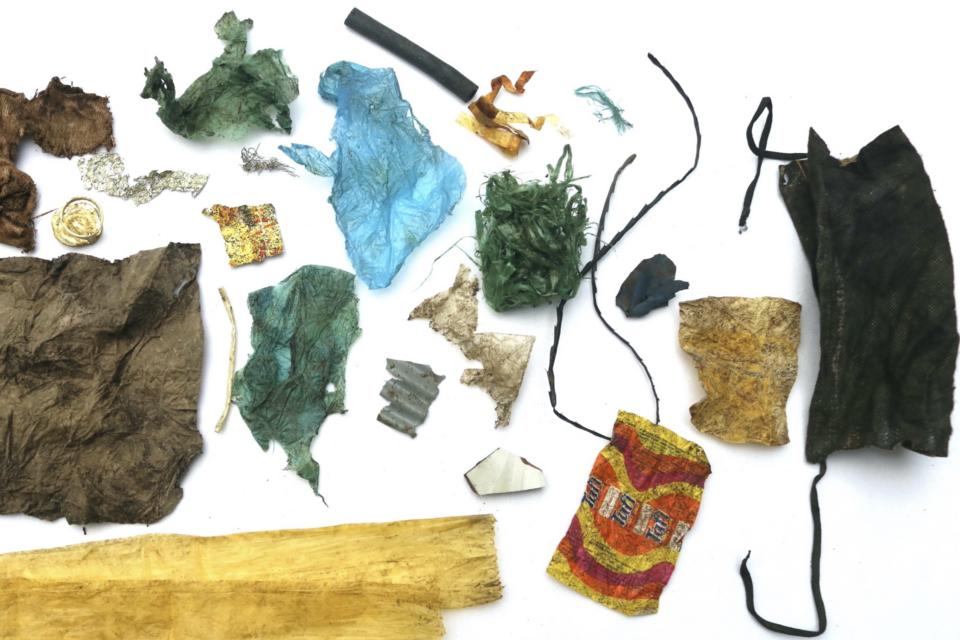
New research shows that Galapagos giant tortoises are ingesting plastic waste
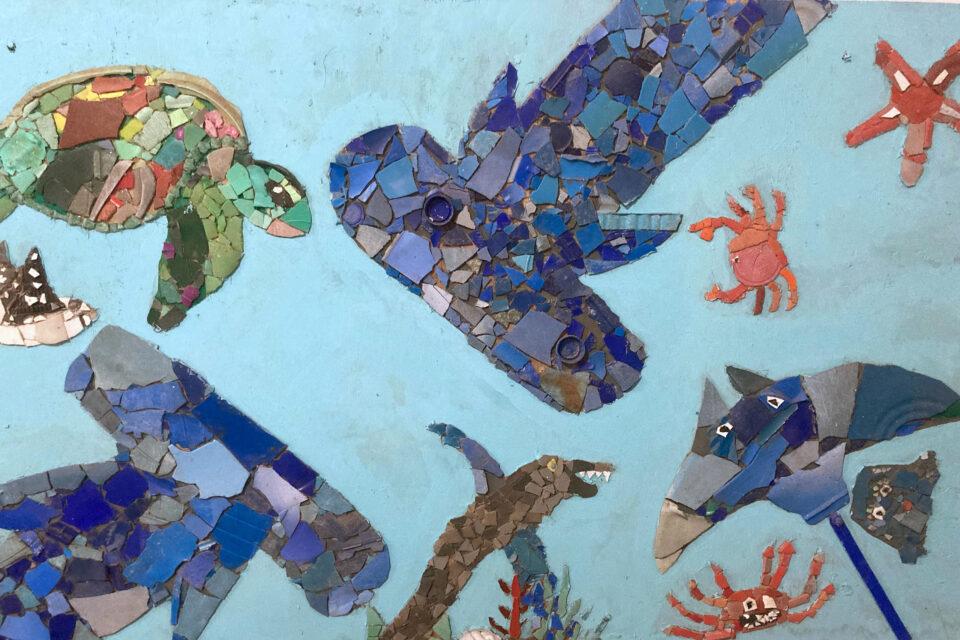
Creating a circular economy for plastics in Galapagos
